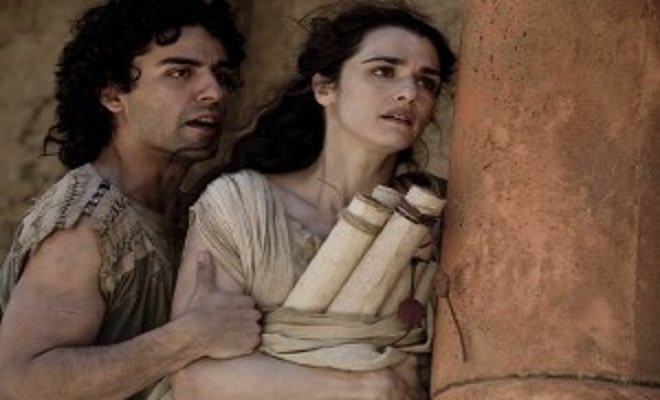 wikipedia
wikipedia
Featured
From Anarchy to degeneration- Imposing External Law. Zoroaster. Extract Two. Part Three: The Path Of The Masters.
by Katherine Frisk, The Phaser.com:
[Editor’s note: The three wise men who followed the star to the birth of Jesus were called the Magi, a central theme in Zoroastrian faith. In our current era both the Magi and the Masters, constantly referred to in Johnson’s work, have their contemporary expression in the Jedi, all students of that most notable character, Master Yoda.
From ancient Egypt would have come the Nubian wise man, an adherent of the raising of Osiris to everlasting life, with a full knowledge of astronomy and astrology, baring the wealth of Africa, which is Gold.
From the far east would have come either a Chinese or an Indian adherent of Buddhism (which will be discussed in the Part four), baring myrrh, which is collected by bleeding the tree and used in healing, especially as a blood moving agent for clots and stagnant blood, given to Jesus as he bled on the cross, mixed with wine on sponge held to his lips.
From Iran would have come a wise man, an adherent of Zoroaster, baring frankincense. Frankincense is burnt in order to create incense, a heady aroma which in many traditions is associated with the “Supreme Being.”
Here the Zoroastian importance of fire plays a central role in the Christian manifestation of the Holy Spirit, sent to guide all Christians. We read in Acts:
“And there appeared to them tongues as of fire distributing themselves, and they rested on each one of them. And they were all filled with the Holy Spirit and began to speak with other tongues, as the Spirit was giving them utterance.”]
The Zoroastrian faith was founded by the great Persian or Iranian sage Zoroaster, or more correctly speaking, Zarathustra. He lived around 600 or 1000 B.C. To him is attributed the religion of the Magi, though doubtless the teachings and practices of the Magi were a much later modification of the real teachings of Zarathustra. In~ modern representatives are the Parsees of India. They are sometimes called fire worshippers, though incorrectly. This is because they look upon fire, and especially the sun; as symbolical of the supreme one. Fire is regarded as an appropriate symbol of God for many reasons, and the symbolism is rich in thought. Fire converts everything into itself. The flames always try to ascend heavenward. Fire is the great purifier, destroying all that is unfit to endure. It also suggests the purity of heart which alone can prepare one to see God. Jesus and all the Masters agree on this point. Fire also cooks the food that nourishes us, just as the holy Shabd gives us the spiritual nourishment, fitting it to our requirements.Fire warms us when we are cold, so the divine current gives us the light and warmth-which means ‘love. Much more is included in this beautiful symbolism if one,cares to pursue the subject.
A collection of the sacred writings of Zarathustra and those of his early disciples now comprise the Zend Avesta, the bible of the of the Zoroastrian faith. After the departure of the great teacher, a group of Zarathustra’s followers formed, what came to be known as the Magi or the Wise men of the East. These magi were probably the original Sufis. It was from among these men that messengers went to see Jesus at the time of his birth. For all truly wise men know when another mahatma is coming.
Zoroastianism prevailed over the ancient gods of Babylon and Nineveh from the time of Cyrus, although it gradually drifted into its decline. When sifted down and washed of its accretions, many nuggets of golden truth will be found in the teachings of the noble Iranian. And this fact links definitely with the work of the great Masters. As to whether Zarathustra himself was a real Master or saint, the best way to answer that is to invite you to the living Master, who himself will give you the method by which you may know all about it yourself, without even taking the word of the Master. The same may be said regarding Jesus or any of the great religious characters of history. The Master can give you the key by means of which you may win the right to a personal interview with any of those men. You will then know of a certainty their standing, not only at the time of their life on this earth but of their present status. You may meet them personally and converse with them.
One of the central truths of the Zoroastrian faith is its doctrine of the universal brotherhood of man. Zoroastrians believe in one supreme being, notwithstanding many assertions to the contrary. The superficial student may readily fall into the error of believing that they taught two gods, one good and the other bad, a statement which may be found in some books. We know that the great Zarathustra never taught such a thing. The idea of two supreme beings is self-contradictory. No great teacher has ever suggested such a thing. Zarathustra taught that the supreme Lord was AhuraMazda, or Ormuzd, and that he was the origin and embodiment of all good. At the same time he mentions the existence of a negative power called Ahriman. This dark power ruled Over the world and was the focal point of all that we call evil; the sum, the embodiment, of all that affects man adversely; in quality-darkness.
Here is a gem of truth not to be overlooked. It is strongly suggestive of the teachings of the Masters, for they frequently mention the existence of a negative power; but he is a subordinate to the supreme one, and he rules over the regions of mind and matter, representing the darker side of creation. This does not mean that he is altogether bad, but in the very nature of things, what we call evil! inheres in negativity. It is simply a lesser good. There can be no doubt but this religion came to Persia and the surrounding country like the falling of showers upon a dry land.Its restorative action came during that period when modem civilization was but an infant in its Mesopotamian cradle. The foundations of culture were laid by the Sumerians, and then by the Sumerian-Akkadian empires, more Semitic ,in character, under Sargon I and his successors. The first empire known to history made Erech its capital at the head of the Persian Gulf. That empire was fed by the fertile valleys of the Tigris and the,Euphrates. In this valley many tribes contended for supremacy during a period of fifty centuries or more. Into its gathering populations poured streams of Dravidians, Semites, Chaldeans and Aryans, the latter being mostly Medes and Persians. The old Assyrian empire gave way to the new when Nineveh, fell into the hands of the more vigorous invaders in 606 B.C.
‘
At about this time came the great saint, or sage, Zarathustra, for when the teachings of the Masters become obscured and corrupted-a new Master comes.In Mesopotamia a score of contending tribes, confusing languages, and conflicting customs then found a new and unifying influence in the philosophy of Zarathustra. The one great message of the ages found a new statement. When Cyrus the Great established a broad empire upon the basis of the new culture, he prepared the way for the .impetuous Alexander to spread its influence to the remotest bounds of the known world. Degenerate as Alexander himself was, he had been prepared for that very mission by the tutoring of Aristotle. Hence the chief service which Alexander rendered to mankind was to break up the old crusts of world thought, or rather of non-thought, and then cultivate the soil of the intellectual world for a new seed-sowing. The seed was to be the wisdom of Zarathustra, Socrates, Aristotle and Plato, each of which bore in its core the germs of the Eastern wisdom. Say what you like, but the one thing that has given life and perpetuity to the philosophy of the Greek Masters is its central golden thread of the Eastern wisdom: the wisdom of the great spiritual Masters.
However, before Alexander came, the pure teachings of Zarathusstra had undergone the usual degenerative changes at least to some extent. When the philosophy of Plato and Aristotle as disseminated throughout the world, the religion of the magi had already become covered over by a mass of senseless ceremony and corrupt practices. When Alexander was born, his mother was steeped in this poison of magian superstition. But the great Iranian had done the work for which he had come. His teaching had given a new impetus to philosophy and religion. The dull minds of the masses had been forced to do a little thinking. All future civilization was to profit by its wholesome influence. It is thus that thought, philosophy and religion are reborn from age to age, as stated in the Gita.
But one thing must not be overlooked in this connection. When any Master leaves his theater of action, the doors of the kingdom of heaven are automatically closed for new seekers so far as he is concerned. This may at first appear to be a very strange thing, .even unjust. But it is not so; because every Master is succeeded .by another, and to him all may go who are ready. We may not forget that this world is never without a Master. To him all will go all who are duly and truly prepared, worthy and well qualified .
.
The rest are then like.the five foolish virgins who brought no oil in their lamps. Whenever and wherever men run after creeds, priests and organizations, they may find .a religion of some sort; but they will .never find the way to enter the kingdom .of God spoken of by all the great Masters. Only a living Master has the key to that kingdom, and he alone can help the student to enter it. In the religion of the noble Iranian, two or three features must be emphasized because they bear a very close relationship to the teachings of the Masters. The most lofty ideal, the highest concept of a perfect life, was.expressed in the Avesta by the word asa, which in the Vedic terminology is equivalent to rita. It is closely related to the Hindu dharma and to the Muslim.word Islam. Its central idea is righteousness, a life in complete harmony with the great law, meaning, fundamentally in harmony with God. The supreme Father, law-giver, life-giver, they called Asura Pita Nab, the same as Ahura-Mazda. The way of approach to him was ash, the way of righteousness. From their sacred scripture comes the unequivocal declaration: “There is none besides the Creator, Ahura-Mazda: everything emanates from him and merges back into him at the end.”
Thus he taught a definite monotheism. This supreme ‘one was formless, all-pervading and beyond all attributes known to us, like the Nirguna Ishwara, the Lord without attributes. According to Zarathustra, there are six different ways ‘the supreme one can make himself known to men. They are also called rays of light from the Supreme. They are spoken of at times as if they were personalities, Amesh-Spenta, ‘Holy Immortals’. They are: (l) Asa-Vahista, supreme will manifested in the world; (2) VohuMano, good mind, divine wisdom, pure-mindedness; (3) Khashathra-Vairya, the all-creative, all-sustaining power; (4) SpentaArmaiti, perfect piety with single-minded devotion; (5) Haurvatat, absolute wholeness, perfection.vspirituality, and (6) .Ameretatat, immortal life, freedom from death or dissolution.
These six represent both the maternal and paternal qualities of God; the first three the’ fatherly and the last three the motherly nature of the Supreme. If we add to these six the great central figure of Ahura-Mazda, we.have the sevenfold Lord, as taught by the prophet Zarathustra.
[Editors note: In Biblical traditions these seven represent the seven days of creation, the seven days of the week, the Hebrew Menorah, the seven sacraments in the Christian Church, the seven churches in Asia mentioned in Revelation and the seven Christian virtues being chastity, temperance, charity, diligence, kindness, patience, and humility. There are also the seven colours of the rainbow and the seven celestial bodies in our solar system that can be seen with the naked eye.]
,
To students of the royal path of Sant Mat, there is one thing more in the system of Zarathustra which is of peculiar interest. In addition to the above-mentioned seven rays of the divine one, he mentions another ray or power which he calls sharosha or sraosha. The name is derived from the Sanskrit root sru, meaning ‘to hear’. This is most significant. It is quite clear to the student of the Masters that this ray of the divine one is something that can be heard. Of course, this refers to the Shabd-dhun of Sant Mat. It can be,nothing else. It is the audible life stream of the saints. .And we may well infer that this important fact was not unknown to Zarathustra. Perhaps, if we had his teachings in their purity, it would be found that he made this sharosha his central theme. He distinctly says that this is the supreme thing, for man to seek and to cultivate. He says that when one fully attains to sharosha the way to solvation stands open before him, all obstructions being removed. This is in exact accord with the teachings of the Masters.
NEXT
Anarchists and The Golden Age- Extract One: The Path of The Masters












